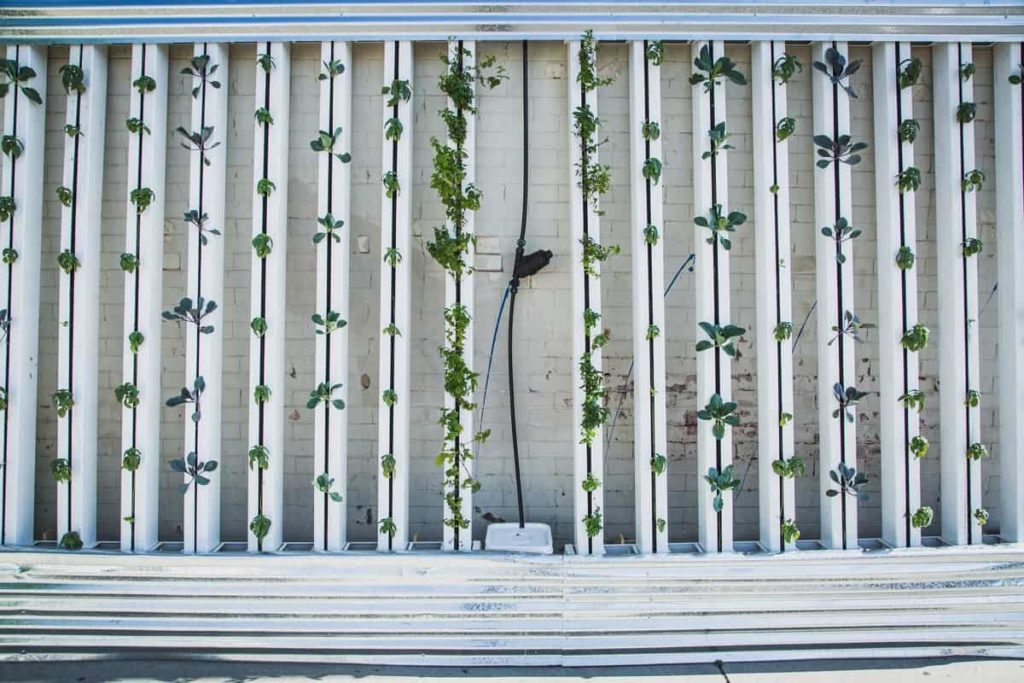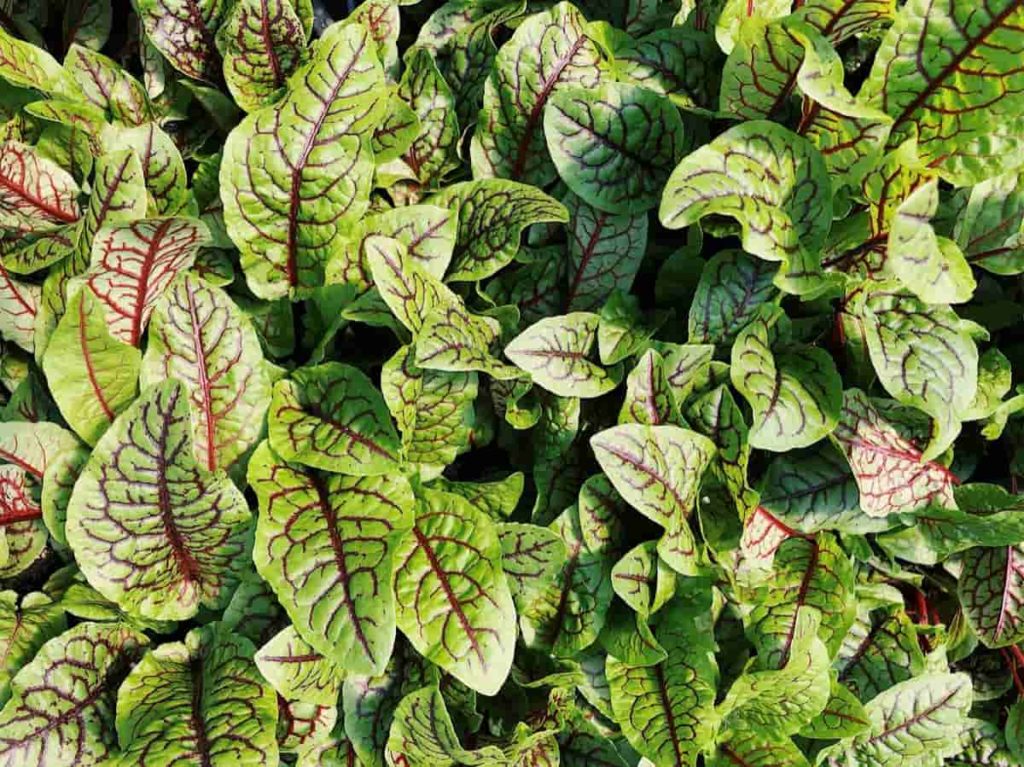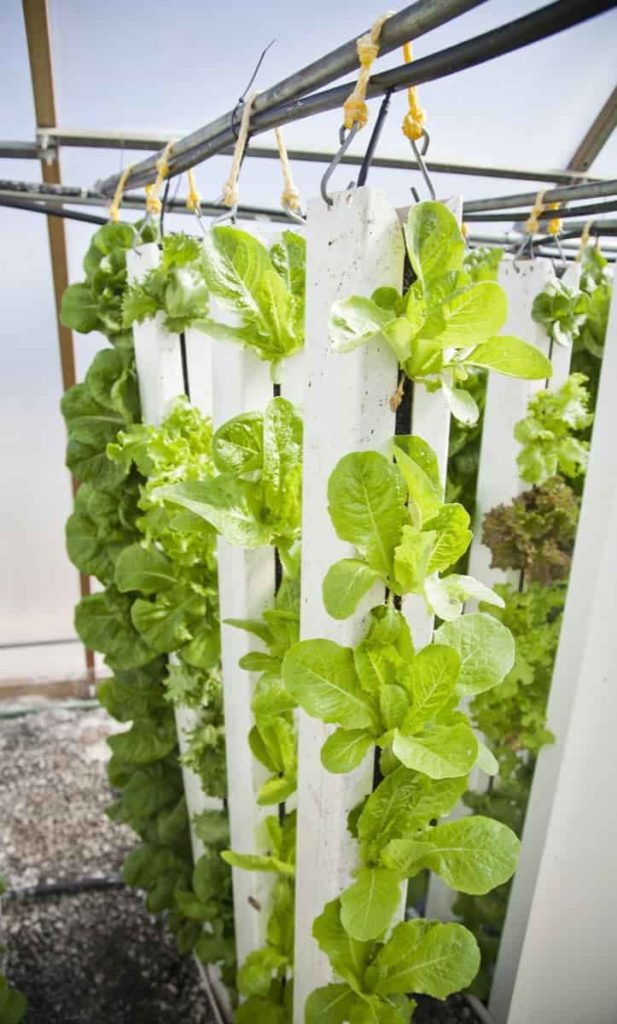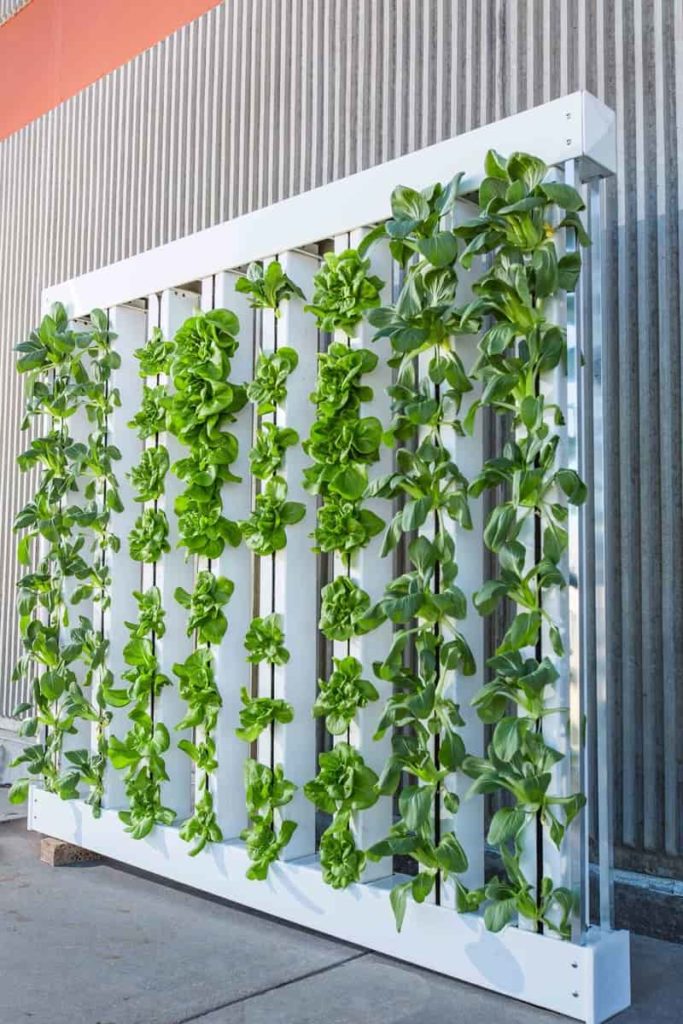Vertical gardens are an alternative for gardeners who do not have much horizontal space, want to cover an unattractive wall, or want something different. The construction of vertical gardens is recommended indoors and especially on the exterior of buildings. By using these technologies, any type of area can be used to its maximum capacity, which is beneficial to the environment and human health.

Vertical farms spend a lot of energy, especially if artificial light is the only source of light for plants. You also have to keep in mind the cost of materials such as growing media, seeds, and nutrition solutions, which are usually 11% of the vertical farm budget. It doesn’t matter what your goals are, remember to budget according to your system and start-up costs.
Vertical farming scheme from government with 75% subsidy
This scheme has been started under Kerala State Horticulture Mission (SHM) in which the beneficiary will get a 75% subsidy on the total cost of vertical garden establishment and the beneficiary will get 25% of the cost will be borne by the beneficiary. The State of Kerala has launched a Vertical Garden Scheme in the state under the Mission for Integrated Development of Horticulture (MIDH). The purpose of this scheme is to help the users to establish a vertical garden for planting.
Beneficiaries will receive 75% of the cost of establishing a vertical garden and 25% of the cost will be borne by the beneficiary. Vertical Garden – Arka takes up 1 square meter and has four vertical levels for planting. The structure consists of a base frame, central support attached to the base frame, and supports. The structure can hold up to 16 pots of different sizes.
Is the business of vertical farming profitable?
Vertical farms have to deal with energy and labor. Energy prices can be as high as 50-70% of the cost of goods sold, as vertical farms have the energy to run 24-hour LED lights, heating and cooling, and robotics. Today’s vertical forms solve many problems, but there are still some that most people do not pay attention to, regardless of climate, weather, or seasons.
They offer the potential to grow a lot of food in the field. These are great ways to bring healthy fresh food to urban areas or places where growing conditions are less than ideal. But at the end of the day, vertical farms should make a profit or at least break even if they want to last.
Government grants
Vegetable farm crops (especially microgreens, leafy vegetables, and tomatoes) are grown in vertical layers in vertical fields without a soil-controlled indoor environment. They produce more crops per square meter than conventional farming or greenhouses, and they can be used all year round, grow plants faster, and use less water. They range in size from small and primitive, such as simple wall-mounted systems to large and industrial, taking over huge, cavernous warehouses.
In case you miss this: MSME Schemes for Agriculture: Loans, Subsidies, Requirements, and Eligibility

The best option for funding is to give someone money you don’t need to repay. Fortunately, your vertical form may be eligible for one of several government grants programs. Vertical farming is the practice of producing food that takes the form of vertically stacked layers and vertically inclined surfaces. This method is implemented inside the building in a controlled environment, usually without soil or natural light. The method of growing crops in a vertical farm consists of the following elements.
- Temperature control
- Humidity control
- Artificial lighting
- Nutrient and fertilizer control and monitoring
When starting vertical agriculture as a small to medium business, planning is essential. The first step in ensuring this is, therefore, choosing the right crops. The vertical farmer needs to do a feasibility study and develop a profitable plan. This is because each species you plan to grow will have a way of growing according to its needs. Determining daily nutrition and light intake is very important for each crop.
Scheme overview
- Scheme – Vertical Garden Scheme
- The scheme under – Kerala Government
- Main beneficiaries – Planters, Farmers
- The main benefit – Under SHM for the establishment of vertical gardens is a 75% subsidy.
- Major objective – To assist the beneficiaries in setting up vertical gardens thereby ensuring their welfare.
In case you miss this: How To Start Organic Farming In India – Schemes
The ‘Arka’ vertical garden covers only 1 square meter. The space has four more vertical levels equipped with 16 pots for planting vegetables. The government has started a vertical garden scheme with a 75% subsidy. In which the candidate needs to invest only 25% of the total cost (Rs. 5835). A unit costs Rs.23,340.
SHM will provide 75% of the amount, which is, 17,505. The beneficiary has to pay the remaining 25% (Rs.5,835). The Kerala State Horticulture Mission plans to purchase and distribute Arka Vertical Garden structures to people living in urban areas around the state to promote urban farming.
Initially, the urban population of Ernakulam and Trivandrum was selected to promote it. In Bangalore, the Indian Institute of Horticultural Research (IIHR) designed the Arka Vertical Garden. IIHR has said it is ready to provide technology to the state government. Following the transfer of technology, the State Horticulture Mission seeks to build structures locally in collaboration with the cooperative business.
In the first phase, the mission aims to provide 330 units to urban households in Ernakulam and Thiruvananthapuram. This structure is perfect for growing vegetables safely and easily for the needs of families. These constructions can be placed in areas where there is a lot of sun, such as a balcony or patio. Vegetables, medicinal plants, and flower crops can be grown in these structures.
In case you miss this: Rythu Bheema Scheme – Pathakam In Telangana
Base frame, primary central support, and branches with pots or grow bags are the three main components. As a growth medium, clay or coco peat can be used in pots. This building takes up very little space, as it can fit in one square meter of space. Plants that require more growth and reach heights of more than two feet, such as Tomatoes, Peppers, Peas, and Eggplants, can be placed near the base of the structure. On the top floors, leafy vegetables and medicinal plants such as Brahmi, Mint, Peppermint, and others.
How vertical farming works
There are four main areas for understanding the way vertical farming works:
- Physical layout
- Lighting
- Growing medium
- Sustainability characteristics.
Firstly, the main purpose of vertical farming is to produce more food per square meter. To this end, crops are grown in the Tower Life Structure. Secondly, the perfect combination of natural and artificial lights is used to maintain the perfect level of light in the room. Technology such as rotating beds is used to improve light efficiency.
Thirdly, instead of soil use aquaponic, aeroponic, or hydroponic growing mediums. Abdominal moss or coconut husk and similar non-soil sources are very common in vertical farming. Finally, the vertical farming method uses various sustainability features to meet the energy costs of the crop. Vertical farming uses 95% less water.
Vertical garden construction subsidy
As part of popularizing agriculture in urban apartments and houses where land is not accessible for cultivation, Project “Promoting Vegetable Cultivation through Arka Vertical Garden Structure in Kerala”. It will be launched in the corporation areas of Thiruvananthapuram, Kollam, Ernakulam, Trichur, Kozhikode, and Kannur districts.
With a 75% subsidy, 330 Arka vegetable garden units will be set up in the corporation areas of the state. The price of one unit is Rs. 23,340. SHM will provide 75% of the total amount, which is Rs. 17,505. The recipient is responsible for the remaining 25% (Rs. 5,835).
In case you miss this: Government Schemes for Organic Farming – In India

Main components of the Arka vertical garden
The main components of the Arka vertical garden are the base frame of one square meter, the central support attached to the base frame, and the pot / grow bag support, all accommodating 16 pots of different sizes and shapes at four different heights. Designed for Drip laterals, microtubes and drippers are used to irrigate plants from a 25-liter plastic container at the top of the surface structure.
Along with the structure, seeds and supplies for plant nutrition and protection will also be delivered. Peppers, Eggplants, Tomatoes, Radishes, Beans such as French Beans, and Cluster Beans, and green vegetables such as Spinach, Amaranths, Coriander, and others can all be grown.
Benefits of the scheme
- SHM will provide a 75% subsidy on the total cost of the structure.
- Only 25% of the cost will be borne by the beneficiary.
- Beneficiaries will also be provided seeds, equipment, plant nutrition, etc.
- The structures are equipped with a drip irrigation facility.
- Vegetables like Spinach, Tomato, Eggplant, etc., can be grown using these structures.
- Easy online application process.
Eligibility
- The applicant must be a resident of the State of Kerala.
- He should be a resident of the corporation areas of Ernakulam, Thiruvananthapuram, Kollam, Trichur, Kozhikode, and Kannur districts.
- It has to pay SHM-Kerala Beneficiary Contribution (25% of the total cost – Rs. 5835) in advance.
Documents required
- Aadhar card
- Domicile certificate
- Space details (to configure the structure)
- Bank account details
- Passport Size Photo
- Economical Aquaculture: A Guide to Low-Budget Fish Farming
- 15 Common Planting Errors That Can Doom Your Fruit Trees
- How to Make Houseplants Bushy: Effective Tips and Ideas
- Innovative Strategies for Boosting Coconut Pollination and Yield
- Pollination Strategies for Maximum Pumpkin Yield
- The Complete Guide to Chicken Fattening: Strategies for Maximum Growth
- Natural Solutions for Tulip Problems: 100% Effective Remedies for Leaf and Bulb-Related Issues
- Revolutionizing Citrus Preservation: Towards a Healthier, Greener Future
- Natural Solutions for Peony Leaf and Flower Problems: 100% Effective Remedies
- Maximizing Profits with Avocado Contract Farming in India: A Comprehensive Guide
- Natural Solutions for Hydrangea Problems: 100% Effective Remedies for Leaf and Flowers
- The Ultimate Guide to Choosing the Perfect Foliage Friend: Bringing Life Indoors
- From Sunlight to Sustainability: 15 Ways to Use Solar Technology in Agriculture
- The Ultimate Guide to Dong Tao Chicken: Exploring from History to Raising
- The Eco-Friendly Makeover: How to Convert Your Unused Swimming Pool into a Fish Pond
- Mastering the Art of Delaware Chicken Farming: Essentials for Healthy Backyard Flocks
- 20 Best Homemade Fertilizers for Money Plant: DIY Recipes and Application Methods
- How to Craft a Comprehensive Free-Range Chicken Farming Business Plan
- Brighten Your Flock: Raising Easter Egger Chickens for Beauty and Bounty
- How to Optimize Your Poultry Egg Farm Business Plan with These Strategies
- Subsidy for Spirulina Cultivation: How Indian Government Schemes Encouraging Spirulina Farmers
- Ultimate Guide to Raising Dominique Chickens: Breeding, Feeding, Egg-Production, and Care
- Mastering the Art of Raising Jersey Giant Chickens: Care, Feeding, and More
- Ultimate Guide to Raising Legbar Chickens: Breeding, Farming Practices, Diet, Egg-Production
- How to Raise Welsummer Chickens: A Comprehensive Guide for Beginners
- How to Protect Indoor Plants in Winter: A Comprehensive Guide
- Ultimate Guide to Grow Bag Gardening: Tips, Tricks, and Planting Ideas for Urban Gardeners
- Guide to Lotus Cultivation: How to Propagate, Plant, Grow, Care, Cost, and Profit
- Agriculture Drone Subsidy Scheme: Government Kisan Subsidy, License, and How to Apply Online
- Ultimate Guide to Raising Araucana Chickens: Breed Profile, Farming Economics, Diet, and Care
- Bringing Hydroponics to Classroom: Importance, Benefits of Learning for School Students
- Ultimate Guide to Raising Polish Chickens: Breed Profile, Farming Economics, Diet, and Care
- Ultimate Guide to Raising Australorp Chickens: Profile, Farming Economics, Egg Production, Diet, and Care
- Silkie Chicken Farming: Raising Practices, Varieties, Egg Production, Diet, and Care
- Sussex Chicken Farming: Raising Practices, Varieties, Egg Production, Diet and Care
- Homemade Feed Formulations for Livestock: Discover Cost-effective Starter to Finisher Feed Recipes


Kindly guide me to set up a vertical garden in my apartment at Kaloor